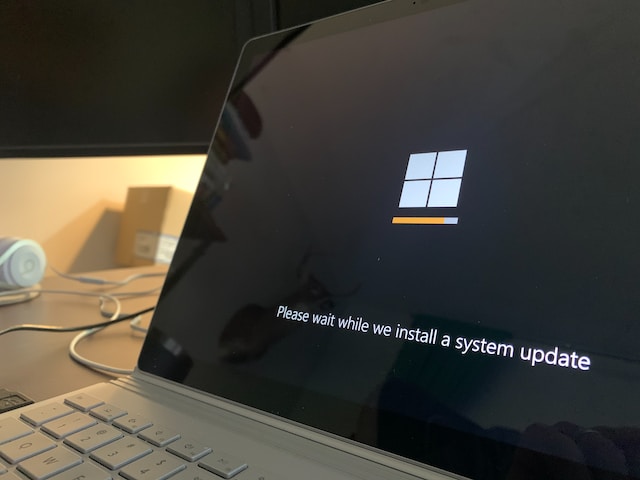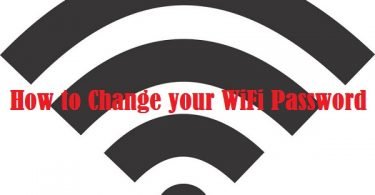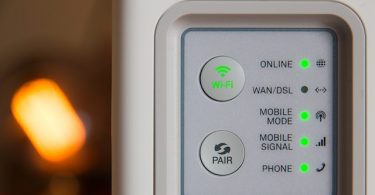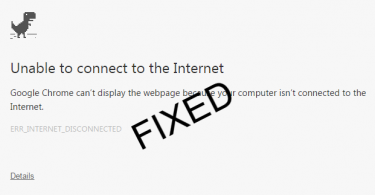Stumbling upon the “No Internet, Secured” error on your Windows device can be a real roadblock in your digital journey. This cryptic message, though confusing at first glance, is a common issue that many Windows users face. It’s a signal that your device is connected to your router, but the internet access is somehow blocked. This error can disrupt your online activities, making it crucial to resolve it promptly for a seamless internet experience.
In this comprehensive guide, we’ll unravel the mystery behind this error and provide you with effective solutions to get you back online. Whether you’re working from home, studying, or simply browsing the web, uninterrupted internet access is essential. So, let’s dive in and tackle this pesky error head-on.

https://unsplash.com/photos/qAR2ndjOAsE
Understanding the “No Internet, Secured” Error
To effectively tackle the “No Internet, Secured” error, it’s crucial to first understand what it means and how it impacts your internet connection.
What Does “No Internet, Secured” Mean?
The “No Internet, Secured” message is a common network status error in Windows 10 and 11. It indicates that your computer is successfully connected to your router (hence the term “Secured“), but it’s not receiving any data from the internet. This can be quite confusing because, despite being connected to your Wi-Fi network, you’re unable to access the internet.
Key Terms and Definitions
| Term | Meaning |
| No Internet | Your computer is not receiving any data from the internet. |
| Secured | Your computer is successfully connected to your router. |
How Does It Affect Your Internet Connection?
When you encounter this error, your Local Area Network (LAN) connections, such as file sharing or device communication, might still work. However, your Wide Area Network (WAN) connections, which include browsing the web, checking emails, or streaming online content, will be disrupted.
In simpler terms, while your computer can communicate with other devices in your home network, it can’t reach the broader internet. This can halt your online activities, making it a significant issue that needs immediate attention.
Remember, this error is not a reflection of your internet’s security status. The “Secured” part of the message simply means that your connection to the router is encrypted and doesn’t imply that your internet connection is secure from threats.
Common Causes of “No Internet, Secured” Error
Understanding the root causes of the “No Internet, Secured” error is the first step towards finding an effective solution. Here are the most common culprits that can lead to this frustrating issue.
Network Outage
One of the most common reasons for encountering this error is a network outage. This means that the problem lies with your Internet Service Provider (ISP) and not your device. A network outage can occur due to various reasons such as maintenance, infrastructure damage, or technical issues at the ISP’s end.
Incorrect Network Selection
Sometimes, the issue can be as simple as being connected to the wrong network. For instance, you might have accidentally connected to a neighbor’s Wi-Fi or a public network that doesn’t have internet access.
VPN Interference
Virtual Private Networks (VPNs) are great tools for enhancing online privacy and security. However, they can sometimes interfere with your internet connection. An active VPN can disrupt your device’s internet connection, leading to the “No Internet, Secured” error.
Wi-Fi Hardware or Software Issues
The error can also be a result of problems with your Wi-Fi hardware or software. This could be due to outdated network drivers, incorrect Wi-Fi settings, or physical issues with your Wi-Fi adapter.
Probable Causes
| Cause | Explanation |
| Network Outage | The issue lies with your Internet Service Provider (ISP), not your device. |
| Incorrect Network Selection | You might be connected to a network that doesn’t have internet access. |
| VPN Interference | An active VPN can disrupt your device’s internet connection. |
| Wi-Fi Hardware or Software Issues | This could be due to outdated network drivers, incorrect Wi-Fi settings, or physical issues with your Wi-Fi adapter. |
By identifying the root cause of the “No Internet, Secured” error, you can apply the most effective solution and get your internet connection back up and running.

https://unsplash.com/photos/R54V69BN0MI
Step-by-Step Guide to Fix “No Internet, Secured” Error
Let’s dive into the practical steps you can take to resolve this issue. We’ll start by checking for a network outage.
Checking for Network Outage
If you suspect that the “No Internet, Secured” error is due to a network outage, follow these steps to confirm:
- Check Other Devices: Try connecting other devices to your Wi-Fi to see if they also have internet issues. If they do, it’s likely a network outage.
- Contact Your ISP: Reach out to your Internet Service Provider. They can confirm if there’s an outage and provide an estimated time for the issue to be resolved.
- Check ISP’s Social Media or Website: ISPs often post updates about outages on their social media channels or websites. Check these platforms for any updates.
- Use an Internet Outage Detector: There are online tools that can detect if your ISP is experiencing an outage. Websites like DownDetector provide real-time information about outages.
Step By Step Instructions
| Step | Action |
| 1. Check Other Devices | Connect other devices to your Wi-Fi to see if they also have internet issues. |
| 2. Contact Your ISP | Reach out to your Internet Service Provider for confirmation and updates. |
| 3. Check ISP’s Social Media or Website | Look for outage updates on your ISP’s social media channels or website. |
| 4. Use an Internet Outage Detector | Use online tools like DownDetector for real-time information about outages. |
By confirming a network outage, you can save time troubleshooting your device and wait for your ISP to resolve the issue.
Verifying Your Connection Status
Ensuring that you’re connected to the correct network is a crucial step in troubleshooting the “No Internet, Secured” error. Here’s how you can verify your connection status:
- Check Your Wi-Fi Icon: Look at the Wi-Fi icon in the system tray at the bottom right of your screen. If it has a yellow triangle, it means there’s an issue with your connection.
- Check Network Name: Click on the Wi-Fi icon to see the name of the network you’re connected to. Make sure it’s your network and not a neighbor’s or a public one.
- Check Connection Status: Go to “Settings” > “Network & Internet” > “Status”. Here, you can see if you’re connected to the internet or not.
Step By Step Instructions
| Step | Action |
| 1. Check Your Wi-Fi Icon | Look for a yellow triangle on the Wi-Fi icon in the system tray. |
| 2. Check Network Name | Click on the Wi-Fi icon to see the name of the connected network. |
| 3. Check Connection Status | Go to “Settings” > “Network & Internet” > “Status” to see your connection status. |
By verifying your connection status, you can ensure that you’re connected to the correct network and move on to the next troubleshooting steps if necessary.
Disabling Your VPN Connection
Virtual Private Networks (VPNs) are excellent tools for enhancing online privacy and bypassing geographical restrictions. However, they can sometimes interfere with your internet connection, leading to the “No Internet, Secured” error. This can happen due to issues with the VPN server, conflicts between the VPN and your ISP, or incorrect VPN settings.
Here’s how you can disable your VPN to check if it’s causing the error:
- Close the VPN Application: If you’re using a VPN application, find it in your system tray or applications list and close it.
- Disconnect from the VPN Network: If you’re connected to a VPN through your network settings, go to “Settings” > “Network & Internet” > “VPN”. Select your VPN connection and click “Disconnect”.
- Check Your Internet Connection: After disconnecting from the VPN, check if your internet connection is back to normal.
Step By Step Instructions
| Step | Action |
| 1. Close the VPN Application | Find the VPN application in your system tray or applications list and close it. |
| 2. Disconnect from the VPN Network | Go to “Settings” > “Network & Internet” > “VPN”, select your VPN connection, and click “Disconnect”. |
| 3. Check Your Internet Connection | Verify if your internet connection is working properly after disconnecting from the VPN. |
If disabling the VPN resolves the “No Internet, Secured” error, you might need to consider switching to a different VPN service or adjusting your VPN settings.
![Image: Show an illustration of a user closing the VPN application, disconnecting from the VPN network through the settings, and checking the internet connection on a Windows computer.]
Resetting Your Router and Computer
Resetting your router and computer can often resolve the “No Internet, Secured” error. This process refreshes your network settings and can eliminate temporary glitches causing the issue.
Resetting Your Router
- Locate the Reset Button: This is usually a small hole at the back of your router. You might need a pin or a paperclip to press it.
- Press and Hold the Reset Button: Hold it for about 10-15 seconds. The lights on the router should flash, indicating that the reset is in progress.
- Wait for the Router to Restart: Once the lights stop flashing and become stable, the router has restarted.
Rebooting Your Computer
After resetting your router, it’s important to reboot your computer as well. This ensures that your computer establishes a fresh connection with your router.
- Save Your Work: Before restarting, make sure to save any open files to prevent data loss.
- Restart Your Computer: Click on the Windows icon, select the power icon, and choose “Restart”.
Step By Step Instructions
| Step | Action |
| Resetting Your Router | |
| 1. Locate the Reset Button | Find the small reset hole at the back of your router. |
| 2. Press and Hold the Reset Button | Hold it for about 10-15 seconds until the lights on the router flash. |
| 3. Wait for the Router to Restart | Wait until the lights stop flashing and become stable. |
| Rebooting Your Computer | |
| 1. Save Your Work | Save any open files to prevent data loss. |
| 2. Restart Your Computer | Click on the Windows icon, select the power icon, and choose “Restart”. |
By resetting your router and rebooting your computer, you can often resolve the “No Internet, Secured” error and restore your internet connection.
Resetting Your Computer’s Network Settings
If the “No Internet, Secured” error persists, resetting your computer’s network settings can help. This process restores your internet settings to their factory defaults, eliminating any configuration issues that might be causing the error.
Here’s how you can reset your network settings in Windows 10 and 11:
- Open Settings: Click on the Windows icon and select “Settings”.
- Navigate to Network Settings: Click on “Network & Internet”, then select “Status”.
- Click on Network Reset: Scroll down to find the “Network reset” option and click on it.
- Confirm Network Reset: Click on “Reset now” and then “Yes” to confirm. Your computer will restart after this process.
Step By Step Instructions
| Step | Action |
| 1. Open Settings | Click on the Windows icon and select “Settings”. |
| 2. Navigate to Network Settings | Click on “Network & Internet”, then select “Status”. |
| 3. Click on Network Reset | Scroll down to find the “Network reset” option and click on it. |
| 4. Confirm Network Reset | Click on “Reset now” and then “Yes” to confirm. Your computer will restart after this process. |
Remember, resetting your network settings will remove all network adapters and set them back to their original settings. You’ll need to reconnect to your Wi-Fi network and reconfigure any custom settings after the reset.
Switching From Wi-Fi to Ethernet
The “No Internet, Secured” error is specific to Wi-Fi connections. If you’re still facing this issue after trying the above solutions, switching to an Ethernet connection can help. An Ethernet connection provides a direct link between your computer and router, often resulting in a more stable internet connection.
Here’s how you can switch from Wi-Fi to Ethernet:
- Get an Ethernet Cable: You’ll need an Ethernet cable to connect your computer directly to your router. These cables are readily available in most electronics stores.
- Connect the Cable: Plug one end of the Ethernet cable into your router and the other end into your computer’s Ethernet port.
- Disable Wi-Fi: To ensure your computer uses the Ethernet connection, disable Wi-Fi. Click on the Wi-Fi icon in the system tray and select “Disconnect” or “Airplane Mode”.
- Check Your Internet Connection: After switching to Ethernet, check if your internet connection is working properly.
Step By Step Instructions
| Step | Action |
| 1. Get an Ethernet Cable | Purchase an Ethernet cable from an electronics store. |
| 2. Connect the Cable | Plug one end of the Ethernet cable into your router and the other end into your computer’s Ethernet port. |
| 3. Disable Wi-Fi | Click on the Wi-Fi icon in the system tray and select “Disconnect” or “Airplane Mode”. |
| 4. Check Your Internet Connection | Verify if your internet connection is working properly after switching to Ethernet. |
Switching to an Ethernet connection can provide a reliable solution to the “No Internet, Secured” error, especially if the issue is related to Wi-Fi settings or hardware.
Running the Windows Network Troubleshooter
Windows comes with a built-in network troubleshooter that can help diagnose and fix common internet connection issues, including the “No Internet, Secured” error. Here’s how you can run the Windows Network Troubleshooter in Windows 10 and 11:
- Open Settings: Click on the Windows icon and select “Settings”.
- Navigate to Network Troubleshooter: Click on “Update & Security”, then select “Troubleshoot”. Under “Get up and running”, you’ll find “Internet Connections”. Click on it.
- Run the Troubleshooter: Click on “Run the troubleshooter”. The troubleshooter will start diagnosing any issues with your internet connection.
- Follow the Prompts: The troubleshooter will provide instructions based on the issues it finds. Follow these prompts to fix the issues.
Step By Step Instructions
| Step | Action |
| 1. Open Settings | Click on the Windows icon and select “Settings”. |
| 2. Navigate to Network Troubleshooter | Click on “Update & Security”, then select “Troubleshoot”. Find “Internet Connections” under “Get up and running”. |
| 3. Run the Troubleshooter | Click on “Run the troubleshooter”. |
| 4. Follow the Prompts | Follow the instructions provided by the troubleshooter to fix the issues. |
The Windows Network Troubleshooter is a handy tool that can help you resolve the “No Internet, Secured” error without needing advanced technical knowledge.
Changing Networking Settings
In some cases, disabling the Internet Protocol version 6 (IPv6) can help resolve the “No Internet, Secured” error. IPv6 is the most recent version of the Internet Protocol, which provides an identification and location system for computers on networks and routes traffic across the internet. However, some routers and devices may not handle IPv6 correctly, leading to connection issues.
Here’s how you can disable IPv6:
- Open Network and Sharing Center: Right-click on the Wi-Fi icon in the system tray and select “Open Network and Sharing Center”.
- Access Adapter Settings: Click on “Change adapter settings” on the left side of the window.
- Open Properties: Right-click on your Wi-Fi network and select “Properties”.
- Disable IPv6: In the networking tab, uncheck the box next to “Internet Protocol Version 6 (TCP/IPv6)”.
- Save Changes: Click “OK” to save the changes and close the window.
Step By Step Instructions
| Step | Action |
| 1. Open Network and Sharing Center | Right-click on the Wi-Fi icon in the system tray and select “Open Network and Sharing Center”. |
| 2. Access Adapter Settings | Click on “Change adapter settings” on the left side of the window. |
| 3. Open Properties | Right-click on your Wi-Fi network and select “Properties”. |
| 4. Disable IPv6 | Uncheck the box next to “Internet Protocol Version 6 (TCP/IPv6)”. |
| 5. Save Changes | Click “OK” to save the changes and close the window. |
Disabling IPv6 is a temporary solution and may not work for everyone. If this doesn’t resolve the “No Internet, Secured” error, you should re-enable IPv6 to ensure your device can use this protocol when necessary.
![Image: Show an illustration of a user navigating the Network and Sharing Center to change adapter settings, opening the properties of the Wi-Fi network, disabling IPv6, and saving the changes.]
Refreshing Your PC’s IP Configuration and Flushing DNS Cache
Problems with your computer’s IP address or DNS cache can lead to the “No Internet, Secured” error. Your computer’s IP address is a unique identifier that allows it to communicate with other devices on the network. The DNS cache, on the other hand, stores the IP addresses of web servers that contain web pages which you have recently viewed. If there’s an issue with either of these, it can disrupt your internet connection.
Here’s how you can refresh your IP configuration and flush the DNS cache:
Releasing and Renewing the IP Address
- Open Command Prompt: Press the Windows key + X and select “Command Prompt (Admin)”.
- Release IP Address: Type ipconfig /release and press Enter. This command will release your current IP address.
- Renew IP Address: Type ipconfig /renew and press Enter. This command will request a new IP address from your DHCP server (usually your router).
Flushing DNS Cache
- Open Command Prompt: Press the Windows key + X and select “Command Prompt (Admin)”.
- Flush DNS Cache: Type ipconfig /flushdns and press Enter. This command will clear your DNS cache.
Step By Step Instructions
| Step | Action |
| Releasing and Renewing the IP Address | |
| 1. Open Command Prompt | Press the Windows key + X and select “Command Prompt (Admin)”. |
| 2. Release IP Address | Type ipconfig /release and press Enter. |
| 3. Renew IP Address | Type ipconfig /renew and press Enter. |
| Flushing DNS Cache | |
| 1. Open Command Prompt | Press the Windows key + X and select “Command Prompt (Admin)”. |
| 2. Flush DNS Cache | Type ipconfig /flushdns and press Enter. |
Refreshing your IP configuration and flushing the DNS cache can help resolve the “No Internet, Secured” error by eliminating any issues related to your IP address or DNS cache.
Updating Your Computer/Windows
Keeping your operating system updated is crucial for its smooth functioning and security. Updates often include patches for bugs and improvements for system stability that can resolve issues like the “No Internet, Secured” error.
Here’s how you can check for updates in Windows 10 and 11:
- Open Settings: Click on the Windows icon and select “Settings”.
- Navigate to Windows Update: Click on “Update & Security”, then select “Windows Update”.
- Check for Updates: Click on “Check for updates”. If there are any updates available, Windows will download and install them automatically.
- Restart Your Computer: After the updates are installed, restart your computer to ensure the changes take effect.
Step By Step Instructions
| Step | Action |
| 1. Open Settings | Click on the Windows icon and select “Settings”. |
| 2. Navigate to Windows Update | Click on “Update & Security”, then select “Windows Update”. |
| 3. Check for Updates | Click on “Check for updates”. |
| 4. Restart Your Computer | Restart your computer after the updates are installed. |
Regularly updating your computer can help prevent the “No Internet, Secured” error and other connectivity issues. It’s a good practice to check for updates regularly to ensure your system is up-to-date.
Rolling Back the Last Windows Update
While Windows updates are generally beneficial, there are instances where an update may cause issues, including the “No Internet, Secured” error. If you’ve recently updated Windows and started experiencing this issue, rolling back the update might resolve the problem.
Here’s how you can undo the last Windows update:
- Open Settings: Click on the Windows icon and select “Settings”.
- Navigate to Windows Update: Click on “Update & Security”, then select “Windows Update”.
- Access Update History: Click on “View update history”.
- Uninstall Updates: Click on “Uninstall updates”. This will open a new window with a list of all the installed updates.
- Select the Last Update: Find the most recent update in the list, click on it, and then click “Uninstall”.
- Follow the Prompts: Follow the prompts to uninstall the update. After the process is complete, restart your computer.
Step By Step Instructions
| Step | Action |
| 1. Open Settings | Click on the Windows icon and select “Settings”. |
| 2. Navigate to Windows Update | Click on “Update & Security”, then select “Windows Update”. |
| 3. Access Update History | Click on “View update history”. |
| 4. Uninstall Updates | Click on “Uninstall updates”. |
| 5. Select the Last Update | Find and select the most recent update, then click “Uninstall”. |
| 6. Follow the Prompts | Follow the prompts to uninstall the update and restart your computer. |
Rolling back the last Windows update can help resolve the “No Internet, Secured” error if it was caused by a recent update. However, this should be a last resort, as updates are crucial for system security and stability.

https://unsplash.com/photos/-jCY4oEMA3o
Rolling Back Network Drivers
Just like a Windows update, an updated network driver can sometimes cause the “No Internet, Secured” error. Network drivers facilitate communication between your computer and the network. If the driver is incompatible or faulty, it can disrupt this communication.
Here’s how you can roll back network drivers in Windows:
- Open Device Manager: Press the Windows key + X and select “Device Manager”.
- Navigate to Network Adapters: Expand the “Network adapters” section.
- Select Your Network Adapter: Right-click on your network adapter and select “Properties”.
- Access Driver Tab: Click on the “Driver” tab.
- Roll Back Driver: Click on “Roll Back Driver” and follow the prompts. If the button is grayed out, it means there’s no driver update to roll back.
- Restart Your Computer: After the process is complete, restart your computer to ensure the changes take effect.
Step By Step Instructions
| Step | Action |
| 1. Open Device Manager | Press the Windows key + X and select “Device Manager”. |
| 2. Navigate to Network Adapters | Expand the “Network adapters” section. |
| 3. Select Your Network Adapter | Right-click on your network adapter and select “Properties”. |
| 4. Access Driver Tab | Click on the “Driver” tab. |
| 5. Roll Back Driver | Click on “Roll Back Driver” and follow the prompts. |
| 6. Restart Your Computer | Restart your computer after the process is complete. |
Rolling back network drivers can help resolve the “No Internet, Secured” error if it was caused by a recent driver update. However, like rolling back Windows updates, this should be a last resort, as updates are crucial for system security and stability.
Updating or Reinstalling Network Adapter Driver
Outdated or faulty network adapter drivers can also lead to the “No Internet, Secured” error. Keeping your network adapter drivers updated ensures optimal communication between your computer and the network.
Here’s how you can update or reinstall your network adapter driver:
- Open Device Manager: Press the Windows key + X and select “Device Manager”.
- Navigate to Network Adapters: Expand the “Network adapters” section.
- Select Your Network Adapter: Right-click on your network adapter and select “Properties”.
- Access Driver Tab: Click on the “Driver” tab.
- Update Driver: Click on “Update Driver” and follow the prompts to search for an updated driver. If Windows doesn’t find a new driver, you can try searching for one on the device manufacturer’s website and follow their instructions.
- Reinstall Driver: If updating the driver doesn’t work, you can try reinstalling it. In the “Driver” tab, click on “Uninstall Device”, then restart your computer. Windows will attempt to reinstall the driver at startup.
Step By Step Instructions
| Step | Action |
| 1. Open Device Manager | Press the Windows key + X and select “Device Manager”. |
| 2. Navigate to Network Adapters | Expand the “Network adapters” section. |
| 3. Select Your Network Adapter | Right-click on your network adapter and select “Properties”. |
| 4. Access Driver Tab | Click on the “Driver” tab. |
| 5. Update Driver | Click on “Update Driver” and follow the prompts. |
| 6. Reinstall Driver | If updating doesn’t work, click on “Uninstall Device”, then restart your computer. |
Updating or reinstalling your network adapter driver can help resolve the “No Internet, Secured” error if it’s caused by driver issues.
Wrapping Up: Tackling the “No Internet, Secured” Error
In this guide, we’ve walked through a comprehensive set of steps to address the “No Internet, Secured” error that can occur in Windows 10 and 11. This error can be frustrating, but with a systematic approach, it’s often possible to resolve it and restore your internet connection.
Here’s a quick recap of the steps we’ve covered:
- Check for a Network Outage: Verify if the issue is from your ISP’s end.
- Verify Your Connection Status: Ensure you’re connected to the correct network.
- Disable Your VPN Connection: Temporarily disable your VPN to check if it’s causing the issue.
- Reset Your Router and Computer: A simple reset can often solve the problem.
- Reset Your Computer’s Network Settings: Restore internet settings to factory default.
- Switch From Wi-Fi to Ethernet: Try a wired connection if possible.
- Run the Windows Network Troubleshooter: Use Windows’ built-in tool to diagnose and fix network issues.
- Change Networking Settings: Disable IPv6 if it’s causing issues.
- Refresh Your PC’s IP Configuration and Flush DNS Cache: Release and renew your IP address and flush your DNS cache.
- Update Your Computer/Windows: Keep your system updated for optimal performance.
- Roll Back the Last Windows Update: Undo the last update if it’s causing issues.
- Roll Back Network Drivers: Revert to the previous version of your network drivers if the latest one is causing issues.
- Update or Reinstall Network Adapter Driver: Keep your network adapter drivers updated or reinstall them if necessary.
Remember, these steps are not exhaustive, and the solution may vary depending on your specific situation. If you’re still experiencing the “No Internet, Secured” error after trying these steps, it may be time to seek professional help. Don’t hesitate to contact your ISP or a tech support professional for further assistance.






















